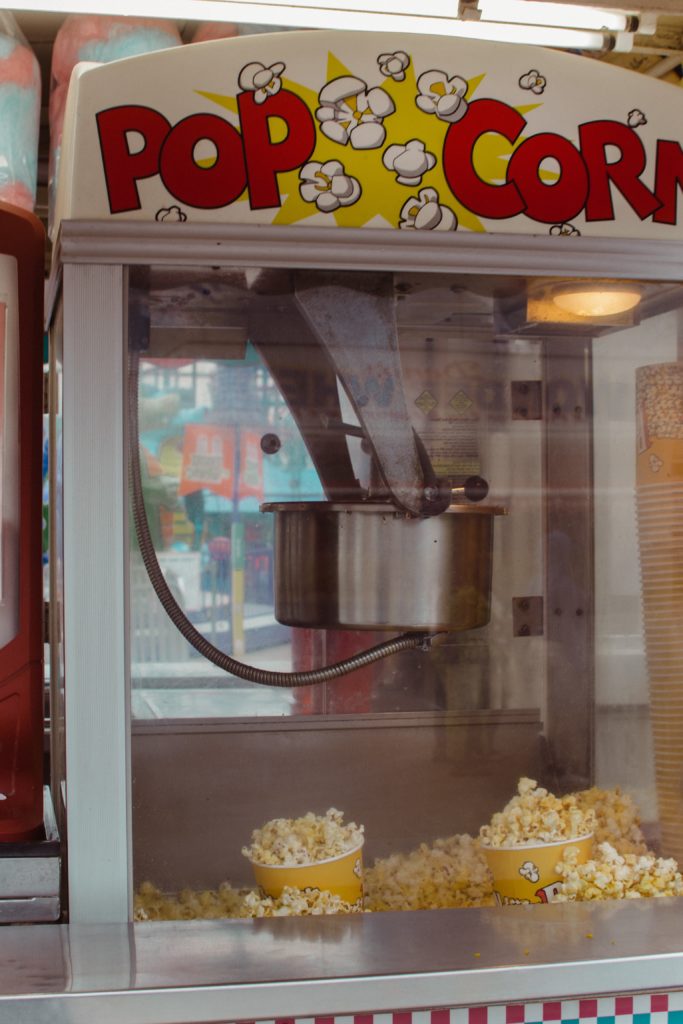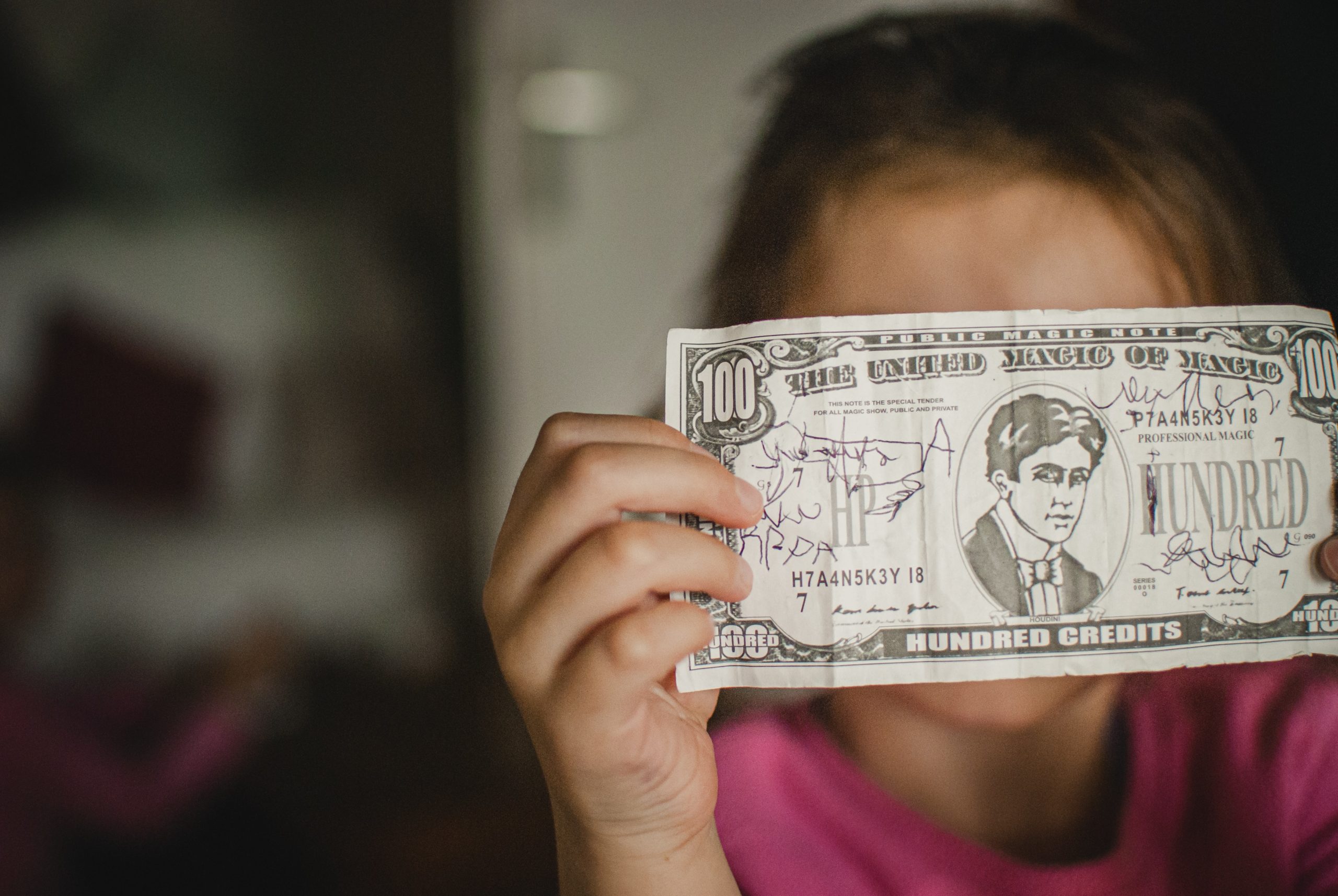Teaching kids about money is an interest of mine. One of the advantages that I’ve had is that I understand the value of a dollar and I know how to make that dollar work for me. Teaching kids about money is not a new topic for MPower, as I wrote this article about teaching children financial literacy and this article about teaching kids about money.
I realized there is a critical component missing in each of these articles. The why. You likely have a good understanding of why already; however, there is new research about children that has been published, and I think applying it to finances could really make a difference for kids as they get older.
What the Research Says about Creating Positive Childhood Experiences
A lot of studies about children have focused on Adverse Childhood Experiences, which basically means if something bad happens to a child growing up that they are more likely to have issues as an adult. However, there is new research that shows that Positive Childhood Experiences (PCEs) can make a profound effect as well.
In a research study, it was found that adults who reported high numbers of PCEs compared to those with low or no PCEs showed 72% lower levels of adult depression and/or poor mental health. Those with high numbers of PCEs also were three and a half times more likely to get the social and emotional support they need as adults.
In another research study, it found that kids who could talk with their parents about things that matter to them have a 1,200% greater chance of flourishing.
In the article citing both research studies, it talks about how PCEs are not things that can be bought or that necessarily cost a lot of money. “They are the experiences that help children learn to trust others even when life is uncertain, difficult or frightening.”
Why Teaching Kids About Money Matters
This last weekend I was talking with a family member, and we were talking about how her daughter is potentially ready for her first job. My cousin felt that her daughter would do great with customer service (which I agree she would!), but my cousin’s only concern was her daughter’s ability to run the cash register. If someone paid with a card, her daughter would be able to understand it, but giving change back for cash was, in her mind, another story. How many kids today get the opportunity to count change?
There are a lot of topics that are uncertain, difficult and/or frightening for children. Money is one of them, and it’s our job as adults to mentor them and prepare them. The concept of money itself is extremely abstract, not to mention the sheer volume of concepts to understand. There are a lot of rules around money, some spoken but a lot of them unspoken.
So, teaching kids about money is critical to encouraging them to become engaged in their own financial process. The younger kids begin talking and teaching kids about money, the sooner the mystery and scariness goes away.
Creating Positive Childhood Experiences Around Money
The purpose of this article is to encourage you, if you are a parent, grandparent, aunt/uncle, or best friend of someone who has kids, to encourage you to take time creating PCEs for children around the topic of personal finance.
I want to tell you about one of my mom’s (Dr. Thia’s) favorite stories to tell about teaching me about finance. On Friday’s we would go to the local store and get groceries and things we needed ahead of the weekend. At the front of the store, there was a small concession stand, where you could get popcorn and sodas, maybe a bag of cotton candy.
One Friday the store had a sign saying it’s big bag of popcorn was $1.00. I was maybe 8 or 9 at the time, so my mom thought this was the perfect opportunity for me to learn that you can exchange money for something that you want. She gave me a one dollar bill and a quarter and sent me over. She had her eye on me the whole time I walked over. I don’t remember the exchange, but she remembers that I could barely see over the counter (it was taller than the normal check-out), so I slid the money onto the counter and pointed at the sign that said $1.00 for the big bag of popcorn.
I had to go to my mom and tell her that the lady wouldn’t sell me the bag of popcorn. My mom thinking the lady hadn’t heard me sent me back over and told me to speak up louder. So, away from the checkout I went back to the concession stand. My mom said she saw me do the same thing and could almost hear what I was saying at the checkout (so clearly loud enough for the lady to hear). The lady at the concession still wouldn’t sell me the popcorn.

I walked back over to my mom with no popcorn in hand. This lesson was not going like my mom had envisioned. My mom walked over and the lady said that the $1.00 price was a discount that was no longer being offered. My mom made it clear that the sign said $1.00, so she didn’t understand. We left the store with no popcorn and a VERY frustrated Dr. Thia.
I remember very clearly a very quiet drive home, and when we got home my mom sent me inside the house, while she sat in the car. A few weeks later I found out that she was calling the district manager of the store from the bag phone we had in our car (yes, this story is from that long ago!).
About a week after the popcorn fiasco I got an extremely apologetic letter from the district manager with a $20 gift certificate (this was before the plastic gift cards) to the store. Dr. Thia was not upset we didn’t get the popcorn. She could have cared less about it. What she realized though was the message that I was being sent was that my money wasn’t good enough.
When I got the gift certificate in the mail, my mom talked with me about how my one dollar bill and the quarter was good enough. I remember that conversation vividly. It’s an example of how the PCE of talking with my mom about how money can buy us things that we want is what to this day is imprinted in my mind. What’s not imprinted in my mind is the Adverse Childhood Experience – being told that I could buy the popcorn. I really cannot remember that part. I have to tell it from my mom’s point of view because that’s how I remember it.
5 Mantras for Creating Positive Childhood Experiences Around Finances
As adults we are not perfect money managers, and we may not know all of the concepts around money or even feel confident with money ourselves. So, I put together a few mantras as reminders for us to use when we aren’t certain with how to lean in to the opportunities we have with respect to teaching kids about money.
- I don’t have to know all of the answers, but I can be present and help the child seek out answers.
Creating a PCE isn’t about knowing every answer; however, listening to their questions and allowing them to guide the experience can result in them truly soaking in the financial knowledge that they need. A great way to lean in to allowing them to lead the experience is by asking “Do you have any questions?” “How are you feeling about what we are doing?”
- I can create traditions around personal finance.
It is important to consider what is age and appropriate maturity wise for a kid; however, you can weave personal finance into experiences. Last year our oldest daughter turned four. I’ll never forget that it was the first time she got money as a gift. She received $5 from her aunt, and you would have thought she was a millionaire going to the store and buying a little trinket with it. Put a few coins in easter eggs (if you celebrate that way), make opening a bank account feel like a positive, yet routine situation. Have a secret handshake you do when your kid puts money into savings.
- I will tell kids stories about how I learned about money.
Put your storytelling skills to the test when you have time. If you’re a person who likes to tell stories at the dinner table or at bedtime, tell stories about finance. Talk about how financial matters were handled by your ancestors and how that did or did not affect you. Using your words and your stories can make talking to you about finance later on feel very comfortable.
- I will not dictate how kids manage money.
This one may feel tough. I, like the next person, like to be in control. However, offering empathy and information will likely go much further to helping kids learn about money than telling them what to do. If you are providing guidance instead of being a dictator, you are a fundamental sounding board that they will come back to for support.
- I will teach my kids that money isn’t everything.
As adults it is easy for us to get caught up in the material things in life. We have to demonstrate that money isn’t everything. Choosing to connect, spend time, and build a solid relationship is a critical component of having the trust of kids when it comes to teaching kids about money. So, put down electronics, play a game of monopoly and laugh with them.
Sign Up for MPower Co’s Newsletter “Spilling The Financial Tea”
If you found this article on teaching kids about money educational and empowering, don’t miss out on our upcoming articles on investing, finance, and using your mindset to live a better life. In MPower Co’s weekly newsletter called Spilling the Financial Tea, we share current topics, financial tips, and our latest articles. Click here to register for the newsletter so that you’ll get a link to future articles like this one.


Join the discussion One Comment